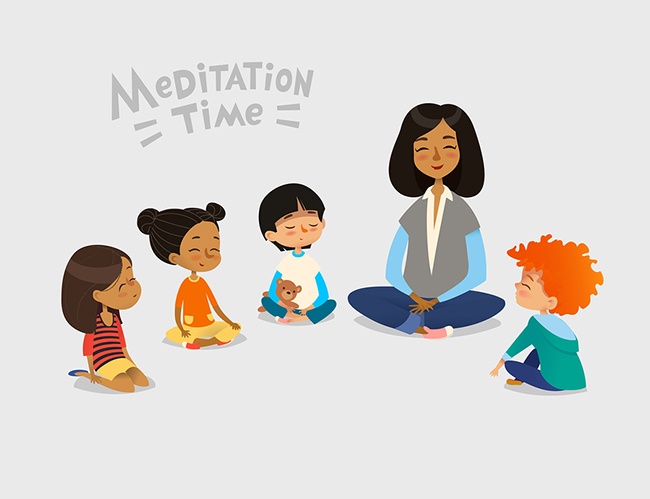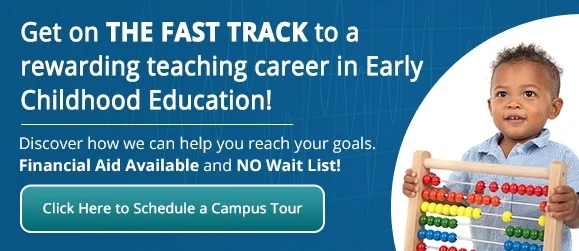Bring Your Career in Focus with an Early Childhood Education Degree
Posted On May 3,2018

Sitting quietly with your legs crossed on a yoga mat seems about as far away from a preschool classroom as you can get. However, there is a way to combine your interest in yoga and meditation with a career with kids.
More and more schools are incorporating mindfulness practices in the classroom. That means the hours of experience you have in a yoga studio could help you better flex your muscles when combined with a degree in early childhood education.
What is Mindfulness?
Mindfulness is intimately connected to self-awareness. This extends naturally to self-regulation. That is something that is just developing in young children. The theory behind mindfulness meditation is if you learn to be more aware of your thought processes and reactions in the present moment, you will be more in charge of your emotions and behaviors. Kids, who are just learning to manage their own internal stuff, can benefit hugely from some instruction on how to do this, rather than having to stumble through it on their own.
Benefits
Contemplative practices like yoga and mindfulness meditation are associated with increased activation in brain regions related a range of activities such as planning, decision-making, and self-regulation of attention, emotions and behaviors. Current research indicates that self-regulation skills in early childhood education make a significant contribution to school readiness, and long-term academic success. Other benefits include:
– Increased attention
– A bump in attendance and grades in school
– A break from outside trauma and stressors
– Better mental health
– Improved social-emotional development
Mindfulness-based cognitive therapy for children has also been shown to help improve attention and behavior problems, and reduce anxiety in kids who started out with high anxiety levels. A study in 2013 showed that in boys with ADHD, an eight-week training in mindfulness, significantly reduced hyperactive behaviors and improved concentration.
3 Easy Meditations for Kids
Mindfulness Meditation
Mindfulness is a form of meditation that tells kids to be aware in the present moment and recognize how they fell. They should notice any sensations of touch, sound, taste, and smell while their eyes are closed. They should try to remain still and quiet for several minutes.
Breath Awareness
Breath awareness is a type of mindful meditation that encourages mindful breathing. Young children breathe slowly and deeply, counting their breaths or otherwise focusing on their breaths. The goal is to focus only on breathing and to ignore other thoughts that enter the mind.
Tapping
A meditation technique called tapping is another way for kids to manifest calm. Firmly but gently tap the body using the fingertips of either hand. Tap long enough so that you can take three complete breaths in and out. Tap parts of the body in the following order:
- Outside edge of hand, below little finger
- Eyebrow
- Under the Eye
- Under the Nose
- Chin
- Beginning of Collar
- Side of ribcage
- Side of Little Finger
- Inside of wrist
- Crown of Head
- Left Side of Chest (heart)
Meditation offers kids’ brains a much-needed break, and helps kids function more effectively and clearly. Plus, since meditation practices are generally safe and have many possible benefits, they can be used in preschool and kindergarten classrooms without risk.
If you are ready to bring your interest in mindfulness in to the classroom, consider a career in Early Childhood Education. Athena Career Center can help. Contact us today to check our options available to get you on the road to your degree.
